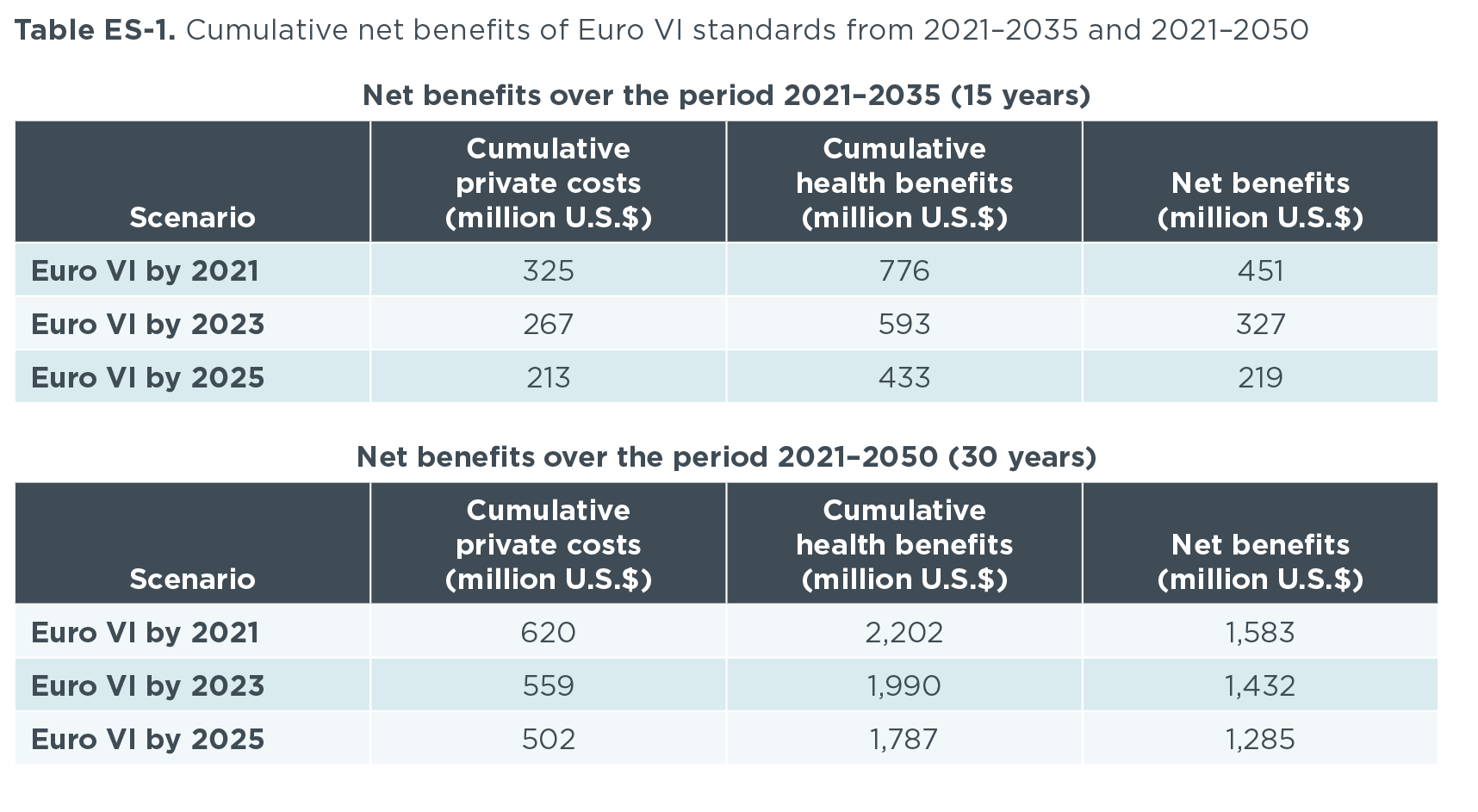2018 South America summit on vehicle emissions control: Summary report and regional workplan
White paper
Cost-benefit analysis of Euro VI heavy-duty emission standards in Argentina
(Versión en español aquí)
Although heavy-duty vehicles (HDVs) are just 3%–4% of Argentina’s on-road vehicles, not including motorcycles, they contribute an estimated 60% of exhaust fine particulate matter (PM2.5) and 70% of nitrogen oxides (NOx) emissions from the fleet. The NOx emissions additionally contribute to the formation of ambient PM2.5 and ozone, which were conservatively associated with approximately 1,000 air-pollution related premature deaths in the country in 2015. The government of Argentina is interested in moving to Euro VI-equivalent, soot-free standards for road transport and has sought analysis comparing the benefits of these standards with the costs of compliance.
To help, this study uses data specific to Argentina’s HDV fleet to make just such a comparison. The authors examine the 15- and 30-year costs and benefits of three implementation start times: by 2021, 2023 (in line with Brazil and Colombia), and 2025. Results show that, over the next 30 years, each $1 invested in soot-free standards will produce $3.60 in health benefits from reduced ambient PM2.5 alone. Further, as detailed in the table below, compared with introducing soot-free standards in 2023, doing so two years earlier would add $124 million, or 38%, of net benefits over the next 15 years. Delaying the standards to 2025 would diminish the net benefits over the next 15 years by 33% compared with the 2023 timeline and by 51% compared with the 2021 timeline. Thus, while earlier introduction of soot-free standards increases HDV manufacturing costs in the near term, it also generates additional long-lasting benefits in the form of improved air quality and health outcomes for Argentines.
